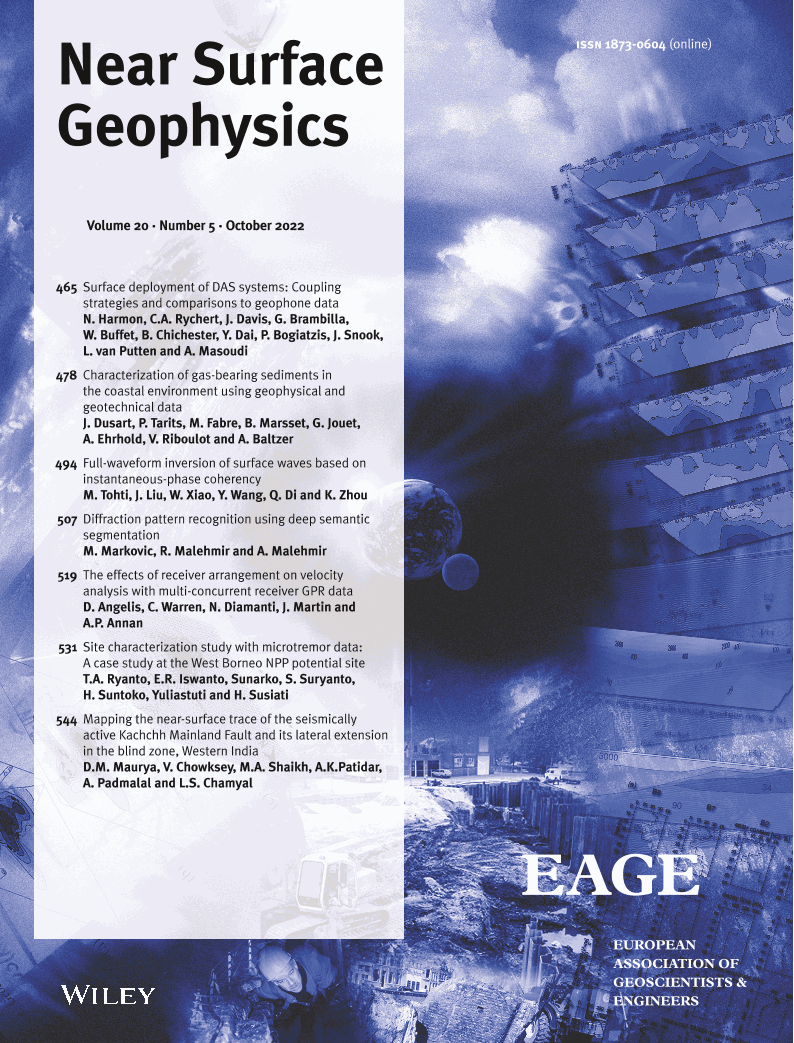-
oa Diffraction pattern recognition using deep semantic segmentation
- Source: Near Surface Geophysics, Volume 20, Issue 5, Sep 2022, p. 507 - 518
-
- 29 Oct 2021
- 06 Jun 2022
- 03 Aug 2022
Abstract
Diffraction imaging can help better understand small‐scale geological structures. Due to their often‐weak signal, in order to image them, it is necessary to separate diffraction signals from the rest of the wavefield. Many different methods have been developed for diffraction wavefield separation, and the newest trend includes the application of artificial neural networks and deep learning. Available case studies with a deep‐learning approach for diffraction separation show good results when applied to synthetic and sedimentary setting datasets where diffraction signals are either strong or have pronounced characteristics. Examples, however, are missing from crystalline or hardrock geological settings where the signal‐to‐noise ratio is by far lower and diffraction signals are usually within a complex reflectivity medium, have steep tails and are usually incomplete. In this study, we showcase the application of a deep semantic segmentation model on synthetic seismic, real ground‐penetrating radar, and hardrock seismic datasets. Synthetic seismic sections were generated using different random noise levels and coherent noise resembling a complex reflectivity pattern interfering with diffraction tails. For the real GPR dataset, diffraction signals were successfully delineated, although in some locations reflections were picked up because of their similar pixel values as the apex of the diffractions. As for the real seismic dataset, through a number of approaches, we were able to completely delineate a single diffraction within several inlines that was generated from a massive sulphide body. The algorithm also enabled us to recognize an incomplete diffraction, at the edge of the seismic cube, which was never labelled. This diffraction originated from outside of the seismic volume and may be a target for future mineral exploration programmes, thanks to the deep semantic segmentation algorithm providing this possibility.




